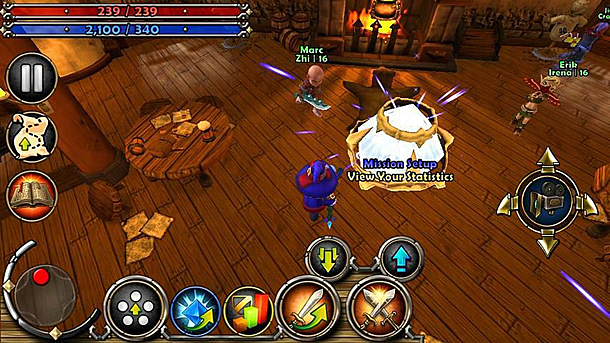F2P games – what and how they are eaten
 What is convenient about F2P, why it is not necessary to finish the games to the end, which is a key factor in the success of free-to-play projects, as well as many other things are told by game designer Pascal Luban.
What is convenient about F2P, why it is not necessary to finish the games to the end, which is a key factor in the success of free-to-play projects, as well as many other things are told by game designer Pascal Luban.
This is the first material in a series of articles about F2P. The original can be read here.
“When we talk about free-to-play (F2P) games, we are not talking about a new genre, but about a whole revolution that has already affected most aspects and factors of production of the gaming industry. Including marketing, publishing, distribution, design and development.
F2P has many advantages. One of the main ones is that, no matter how strange it may sound, it does not require large investments at the start.
The secret is that such games do not have to be completed to the end. Publisher Nexon has estimated that a free-to-play game can be released with content as low as 50% ready. In Playfish, the percentage of “readiness” can drop to 20%. The rest is gradually filled in after the release.
A key factor in the success of F2P is also a powerful system of statistical analysis implemented in such games. By collecting data and conducting research, you can find out the nature and preferences of the players.
Using this data and listening to the comments of the players, developers can correct the shortcomings and enhance the advantages of the game. If the game has a good concept, then it – with high–quality implementation – will definitely not fail.
But enough general words. Let’s talk about the key points.
Some argue that the design of, for example, a social game like FarmVille has little in common with Combat Arms or Leagua of Legends, two F2P projects aimed at a hardcore audience. But in fact, it does not matter at all what genre your game is or what platform it came out on: all F2P games follow the same rules.
Key Design differences between Traditional and Free-to-Play games
In traditional projects, the designer has only one task – to entertain the player, while in an F2P game, the designer’s attention is immediately focused on both entertainment and monetization of this very entertainment. Jamie Cheng, founder of Klei Entertainment, spoke well about this: “Don’t make people pay for entertainment. Entertain them so that they pay.”
So what should a game designer think about when starting an F2P game?
Instant gratification
Having bought the game, the user is forced to play it. He invested money in it. To take and throw the disc out of the window, if the first impression of the game is not very favorable, he will not: he will definitely sit, suffer, and then, suddenly, the pleasure of the process will appear.
The F2P developer cannot afford this. He should be interested in the game right away, because there is no “connection” between the free application and the user. If something in the project does not suit – the player immediately erases it without remorse. Therefore, the first priority is the satisfaction of the player in the first hours or even minutes of the game.
A game like Tetris
The following rule works in F2P: the longer the user plays (week, month, year), the more likely he is to buy something in it. Just do not develop games with the expectation that they will be played for months without fail.
The trend that has been observed for several years now is small, but very intense gaming sessions. The main task is to get players to regularly return to the game again and again. It’s like playing tetris: I played a game and went about my business, then I played again and went to smoke while driving home – I played again.
Develop for new audiences
While F2P games in the MMO and FPS genre are designed for a hardcore audience, many free-2-play projects are also addressed to women and young children who do not play traditional video games. They have a different motivation, different expectations. The key to success is to identify the audience, study it and give it what it wants.”



